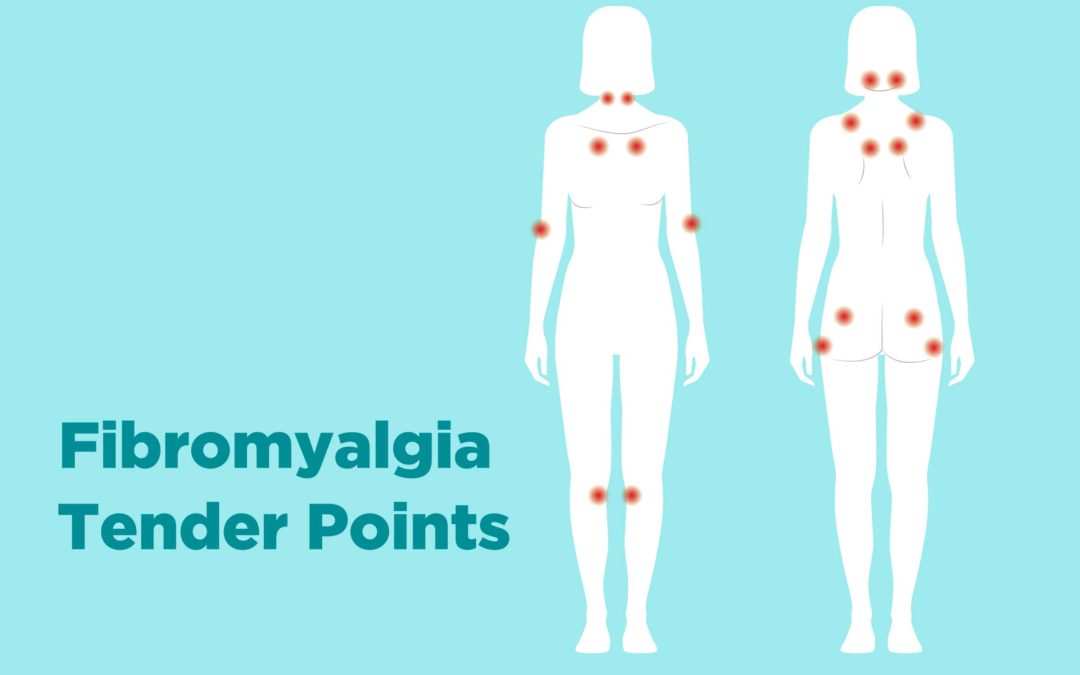We wanted to talk a little bit about how we treat fibromyalgia because it’s much different than it was ten years ago.
There are 18 major pain points that you can identify in a person with fibromyalgia. Those pain points can be very debilitating for them and their families. In this blog, we will talk a little about those stories from our patients.
Fibromyalgia treatment history
Ten years ago, fibromyalgia was not taken seriously. Doctors used to question whether or not fibromyalgia even existed. There were no inflammatory markers that would indicate pain levels in individuals with fibromyalgia. But we are learning now is that it does exist and you can find it in the connective tissue. We’re now able to see many imbalances.
Just because you’ve been told your tests are in the normal range, doesn’t mean your chronic pain doesn’t exist.
A shocking 75-90% of the people struggling with fibromyalgia are women. Their pain was often written off and they were not listened to by many doctors, so many were left with no clear solution to their pain.
Things are a bit different nowadays compared to 10 years ago. Let’s say you go into the doctor looking for treatment for fibromyalgia, 76% of doctor’s visits (not specific to fibromyalgia) end in a prescription to handle the symptoms. We’ve seen a lot of our patients come in that have been on prescriptions like Cymbalta which have been amazing for helping them relieve some of their pain and get through their day-to-day lives. However, once you start taking any medication consistently, your body begins to rely on it to treat your symptoms.
We want to get your health regenerated or restored. We don’t want to focus on masking your symptoms, we want to find and solve the root cause of your pain.

Here are some of the most common fibromyalgia symptoms.
Widespread pain
If you have fibromyalgia, one of the main symptoms is likely to be widespread pain. This may be felt throughout your body but could be worse in particular areas, such as your back or neck. The pain is likely to be continuous, although it may be better or more severe at different times. The pain could feel like:
- an ache
- a burning sensation
- a sharp, stabbing pain
Extreme sensitivity
Fibromyalgia can make you extremely sensitive to pain all over your body, and you may find that even the slightest touch is painful. If you hurt yourself, such as stubbing your toe, the pain may continue for much longer than it normally would. You may hear the condition described in the following medical terms:
- hyperalgesia – when you’re extremely sensitive to pain
- allodynia – when you feel pain from something that should not be painful at all, such as a very light touch
You may also be sensitive to things like smoke, certain foods, and bright lights. Being exposed to something you’re sensitive to can cause your other fibromyalgia symptoms to flare up.
Stiffness
Fibromyalgia can make you feel stiff. The stiffness may be most severe when you have been in the same position for a long period of time – for example, when you first wake up in the morning. It can also cause your muscles to spasm, which is when they contract (squeeze) tightly and painfully.
Fatigue
Fibromyalgia can cause extreme tiredness (fatigue). This can range from a mild tired feeling to the exhaustion often experienced during a flu-like illness. Severe fatigue may come on suddenly and can drain you of all your energy. If this happens, you may feel too tired to do anything at all.
Poor sleep quality
Fibromyalgia can affect your sleep. You may often wake up tired, even when you have had plenty of sleep. This is because the condition can sometimes prevent you from sleeping deeply enough to refresh you properly. You may hear this described as non-restorative sleep.
Cognitive problems (‘fibro-fog’)
Cognitive problems are issues related to mental processes, such as thinking and learning. If you have fibromyalgia, you may have:
- trouble remembering and learning new things
- problems with attention and concentration
- slowed or confused speech
Headaches
If fibromyalgia has caused you to experience pain and stiffness in your neck and shoulders, you may also have frequent headaches. These can vary from being mild headaches to severe migraines, and could also involve other symptoms, such as feeling sick.
Irritable bowel syndrome (IBS)
Some people with fibromyalgia also develop irritable bowel syndrome (IBS). IBS is a common digestive condition that causes pain and bloating in your stomach. It can also lead to constipation or diarrhea.
Other symptoms
Other symptoms that people with fibromyalgia sometimes experience include:
- dizziness and clumsiness
- feeling too hot or too cold – this is because you’re not able to regulate your body temperature properly
- an overwhelming urge to move your legs (restless legs syndrome)
- tingling, numbness, prickling, or burning sensations in your hands and feet (pins and needles, also known as paraesthesia)
- in women, unusually painful periods
- anxiety
- depression

Depression
In some cases, having the condition can lead to depression. This is because fibromyalgia can be difficult to deal with, and low levels of certain hormones associated with the condition can make you prone to developing depression. Depression can cause many symptoms, including:
- constantly feeling low
- feeling hopeless and helpless
- losing interest in the things you usually enjoy
If you’re experiencing any of these symptoms, get in touch with our clinic and we will schedule you for a consultation.

